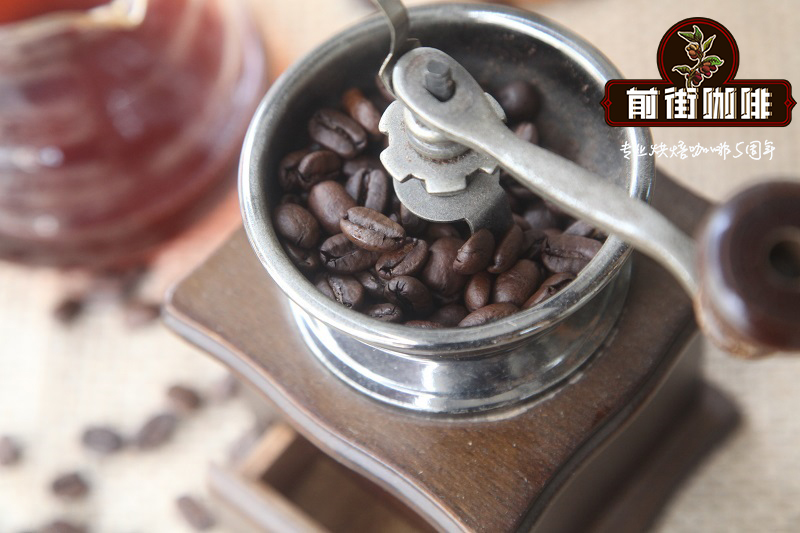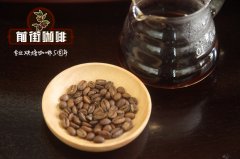Colombia Boutique Estate Coffee Bean Nalonga Ponte Estate Flavor and Taste Characteristics?

Professional coffee knowledge exchange more coffee bean information please follow the coffee workshop (Wechat official account cafe_style)
Columbia boutique manor coffee beans Na Linglong Aponte Manor's flavor and taste characteristics?
Country: Colombia (Colombia)
Producing area: Tabl ó n de G ó mez, Nalinglong province (Narino)
Producer: Aponte Manor (Inga Aponte)
Variety: Kaddura (Caturra)
Altitude: average 2150 m
Treatment: washing treatment
Flavor features: honey, flower scent, dark chocolate, red cherry, sweet sugarcane, cocoa
Introduction:
To the west of Colombia is the Andes, which is divided into three parts: the western, central and eastern mountains. The Cauca and Magdalena rivers flow along the Caribbean to the lowland plains.
Colombia, currently the world's third largest coffee producer, uses washing to treat Arabica coffee beans. It is also one of the largest producers of high-quality coffee in the world. Traditional deep-roasted coffee has a strong and memorable flavor. Coffee was first introduced to Colombia in 1808, when it was brought by a priest from French Antilles via Venezuela. Today, the country is the third largest coffee producer after Brazil and Vietnam, with an annual output of 12 million bags of 60 kg each, while Brazil produces 31 million bags a year. The status of coffee in Colombia can be seen in the following examples: all vehicles entering the country must be sprayed and sterilized so as not to inadvertently cause disease and damage coffee trees.
The main producing areas are Huila (San Augustin), Narino, Tolima, Popayan (Cauca), Valle de Cauca, Meta, Antioquia (Medellin), Magdelena (Sierra Nevada), Boyaca, Santander (Bucaramanga) and so on. About 700 million coffee trees are documented in Colombia, 66% of which are planted in modern plantations and the rest in small, traditionally run farms. The main varieties include Kaddura Caturra, Colombia Colombia, Tibica Tipica, Bourbon Bourbon, Elephant Bean Maragogype, and Tabi. Farms and cooperatives throughout the country, big or small, are distributed in more than 500000 municipalities and 14 major coffee-producing areas. A total of 2 million Colombians depend on coffee cultivation for a living, contributing 12.5 per cent to gross domestic product. High-end Colombian coffee beans grow in the Andes at an altitude of 1200m and 2000m, and are planted between banana trees and rubber trees to provide shade for coffee trees.
Colombian coffee farmers can sell all their products to the Coffee Management Association at an official low price or to exporters, who may offer higher prices. In fact, the Coffee Management Association controls overall exports to Europe, while coffee to the United States is mainly exported through private exporters, however, all exports are controlled by the lowest export price.
Narino province is located in the southwest of Colombia, the whole territory is located in the highest region of Colombia, the provincial capital San Juan de Pasto borders Ecuador (Ecuador) and faces the Pacific Ocean. Coffee cultivation is a very important economic pillar for Na Linglong province, where traditionally the planting area of small coffee farmers is less than one hectare.
Most of the coffee growing areas in the province are alpine terrain belonging to the Andes, remote mountains, steep mountains, blown by the Pacific sea breeze, the provincial capital San Juan de Pasto. At the same time, Narino province is also one of the important coffee producing areas in Colombia. although its planting area is the smallest of the 14 large producing areas, the whole territory has the natural environmental conditions of special valley microclimate, so the coffee produced is of the best quality and has been known as the "Holy Grail of the Pope" since ancient times. Near the Ecuadorian border, the raw beans planted on the cloud belt at an altitude of about 1600 Murray 2300 meters have excellent environment, fertile soil, careful and complicated harvesting and treatment procedures, and extremely high quality.
Important Notice :
前街咖啡 FrontStreet Coffee has moved to new addredd:
FrontStreet Coffee Address: 315,Donghua East Road,GuangZhou
Tel:020 38364473
- Prev

What does German iced coffee mean? How do you make iced coffee? is it made with cold water?
Professional coffee knowledge exchange more coffee bean information please follow the coffee workshop (Wechat official account cafe_style) in different European countries, iced coffee is also different! German Eiskaffee iced coffee with ice cream balls and cream there are also many kinds of iced coffee in Germany, but the classic one is
- Next

How do you make frozen coffee? A tutorial on the making method of self-made Frozen latte Coffee can be refrigerated
Professional coffee knowledge exchange more coffee bean information please follow the coffee workshop (Wechat official account cafe_style) to make a cup of frozen coffee Latte, so that mellow coffee and fine milk blend. Not only the entrance is cold, the mood is also cool, it is really a good taste of happiness ~ join us today to cook a cup of frozen Latte! Prepare props and ingredients for today's choice of coffee
Related
- Detailed explanation of Jadeite planting Land in Panamanian Jadeite Manor introduction to the grading system of Jadeite competitive bidding, Red bid, Green bid and Rose Summer
- Story of Coffee planting in Brenka region of Costa Rica Stonehenge Manor anaerobic heavy honey treatment of flavor mouth
- What's on the barrel of Blue Mountain Coffee beans?
- Can American coffee also pull flowers? How to use hot American style to pull out a good-looking pattern?
- Can you make a cold extract with coffee beans? What is the right proportion for cold-extracted coffee formula?
- Indonesian PWN Gold Mandrine Coffee Origin Features Flavor How to Chong? Mandolin coffee is American.
- A brief introduction to the flavor characteristics of Brazilian yellow bourbon coffee beans
- What is the effect of different water quality on the flavor of cold-extracted coffee? What kind of water is best for brewing coffee?
- Why do you think of Rose Summer whenever you mention Panamanian coffee?
- Introduction to the characteristics of authentic blue mountain coffee bean producing areas? What is the CIB Coffee Authority in Jamaica?

